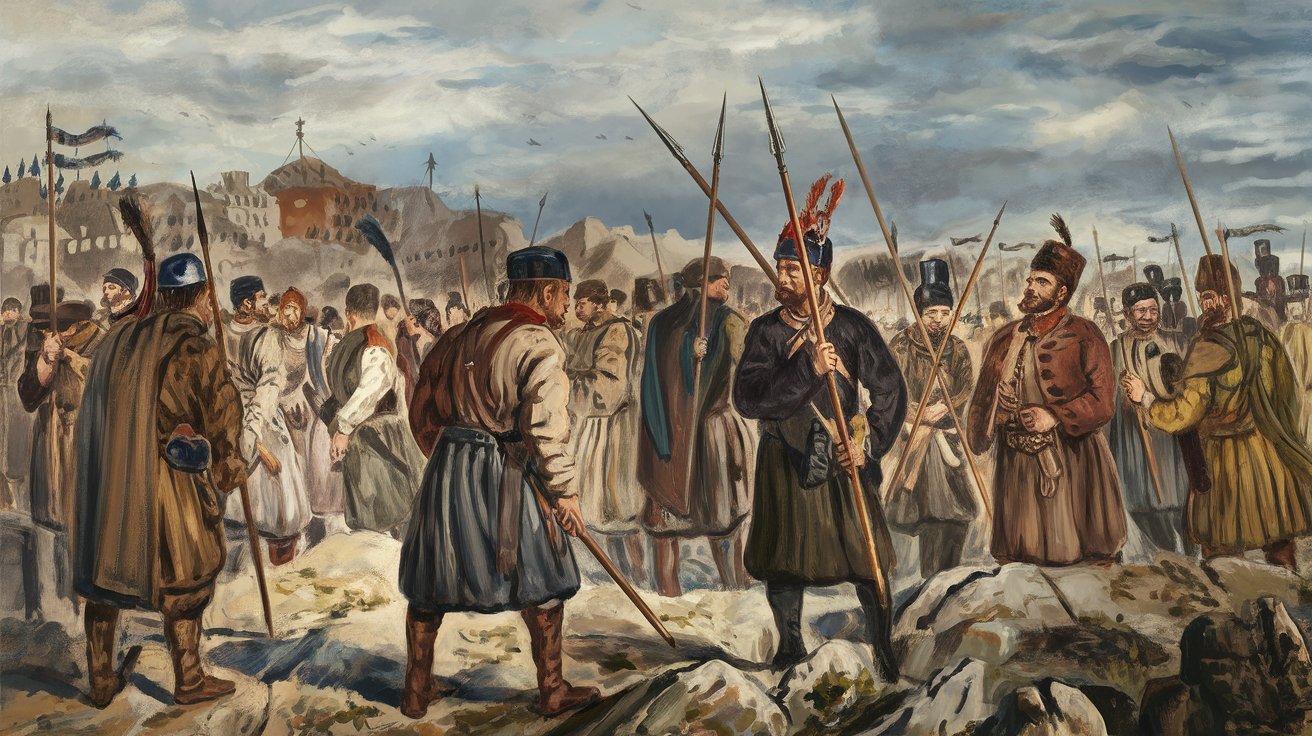
What was the Menashi-Kunashir Rebellion? The Menashi-Kunashir Rebellion was a significant uprising in 1789 involving the Ainu people against Japanese settlers on Hokkaido's eastern coast. This revolt was fueled by growing tensions over unfair trade practices, forced labor, and cultural suppression. The Ainu, indigenous to the region, sought to reclaim their autonomy and resist the encroaching influence of the Matsumae clan. Although the rebellion was ultimately quashed, it highlighted the deep-seated grievances and struggles of the Ainu community. Understanding this event sheds light on the complex history of Japanese-Ainu relations and the broader issues of colonialism and indigenous rights.
Key Takeaways:
- The Menashi-Kunashir Rebellion was a conflict between the Ainu people and Japanese settlers in the late 18th century, highlighting the struggle for autonomy and cultural rights.
- The rebellion led to a harsh crackdown on the Ainu, emphasizing the need for better understanding and cooperation between indigenous cultures and settlers.
The Menashi-Kunashir Rebellion: An Overview
The Menashi-Kunashir Rebellion, also known as the Menashi-Kunashir Incident, was a significant event in Japanese history. This rebellion took place in the late 18th century on the northern islands of Japan. Here are some fascinating facts about this historical event.
Origins of the Rebellion
Understanding the roots of the Menashi-Kunashir Rebellion helps grasp its impact on Japanese history.
- The rebellion occurred in 1789 on the islands of Menashi and Kunashir, located in the northern part of Japan.
- It was primarily a conflict between the indigenous Ainu people and Japanese settlers.
- The Ainu, native to Hokkaido and surrounding areas, faced increasing pressure from Japanese expansion.
- The rebellion was partly fueled by the Ainu's dissatisfaction with unfair trade practices imposed by the Japanese.
- The Ainu were also upset about the encroachment on their lands and resources by Japanese settlers.
Key Figures in the Rebellion
Several individuals played crucial roles in the Menashi-Kunashir Rebellion, shaping its course and outcome.
- Shakushain, an Ainu leader, was a prominent figure who inspired resistance against Japanese settlers.
- Another key figure was Matsumae Takahiro, the Japanese lord responsible for overseeing the region.
- The rebellion saw the involvement of various Ainu chiefs who united their tribes against the common threat.
- Japanese traders and settlers, who had established a presence in the region, were also central to the conflict.
- The Matsumae clan, which held control over Hokkaido, played a significant role in the suppression of the rebellion.
The Course of the Rebellion
The Menashi-Kunashir Rebellion unfolded through a series of events that highlighted the tensions between the Ainu and Japanese settlers.
- The rebellion began with a surprise attack by the Ainu on Japanese settlements in Menashi and Kunashir.
- The Ainu used their knowledge of the terrain to their advantage, initially gaining the upper hand.
- Japanese settlers, caught off guard, suffered significant losses in the early stages of the conflict.
- The Matsumae clan quickly mobilized forces to quell the rebellion, leading to a series of skirmishes.
- Despite their initial success, the Ainu faced challenges due to their limited resources and weaponry.
Impact and Aftermath
The Menashi-Kunashir Rebellion had lasting effects on the relationship between the Ainu and Japanese settlers.
- The rebellion was eventually suppressed by the Matsumae clan, leading to a harsh crackdown on the Ainu.
- Many Ainu leaders were captured and executed, while others were forced into submission.
- The rebellion led to stricter control over the Ainu by the Japanese authorities.
- Trade practices were further regulated, often to the detriment of the Ainu people.
- The rebellion highlighted the need for better understanding and cooperation between the Ainu and Japanese settlers.
Cultural and Historical Significance
The Menashi-Kunashir Rebellion remains an important event in Japanese history, reflecting broader themes of resistance and cultural conflict.
- The rebellion is seen as a symbol of the Ainu's struggle for autonomy and rights.
- It has been the subject of various historical studies, shedding light on the complexities of Ainu-Japanese relations.
- The rebellion is commemorated in Ainu oral traditions and cultural practices.
- It has inspired literature and art, reflecting the enduring legacy of the Ainu's resistance.
- The Menashi-Kunashir Rebellion serves as a reminder of the importance of respecting indigenous cultures and histories.
The Lasting Impact of the Menashi-Kunashir Rebellion
The Menashi-Kunashir Rebellion left a significant mark on Japanese history. This conflict, which occurred in the late 18th century, highlighted the tensions between the Ainu people and the Japanese settlers. It wasn't just a clash over territory but a struggle for cultural survival. The rebellion underscored the Ainu's resistance against assimilation and loss of their lands.
Understanding this event helps us appreciate the complexities of Japan's history and the resilience of the Ainu culture. The rebellion's aftermath led to changes in policies and attitudes towards the Ainu, though challenges persisted. Today, the legacy of the Menashi-Kunashir Rebellion serves as a reminder of the importance of respecting and preserving indigenous cultures. By learning about these historical events, we can foster a more inclusive and understanding society.
Frequently Asked Questions
Was this page helpful?
Our commitment to delivering trustworthy and engaging content is at the heart of what we do. Each fact on our site is contributed by real users like you, bringing a wealth of diverse insights and information. To ensure the highest standards of accuracy and reliability, our dedicated editors meticulously review each submission. This process guarantees that the facts we share are not only fascinating but also credible. Trust in our commitment to quality and authenticity as you explore and learn with us.
